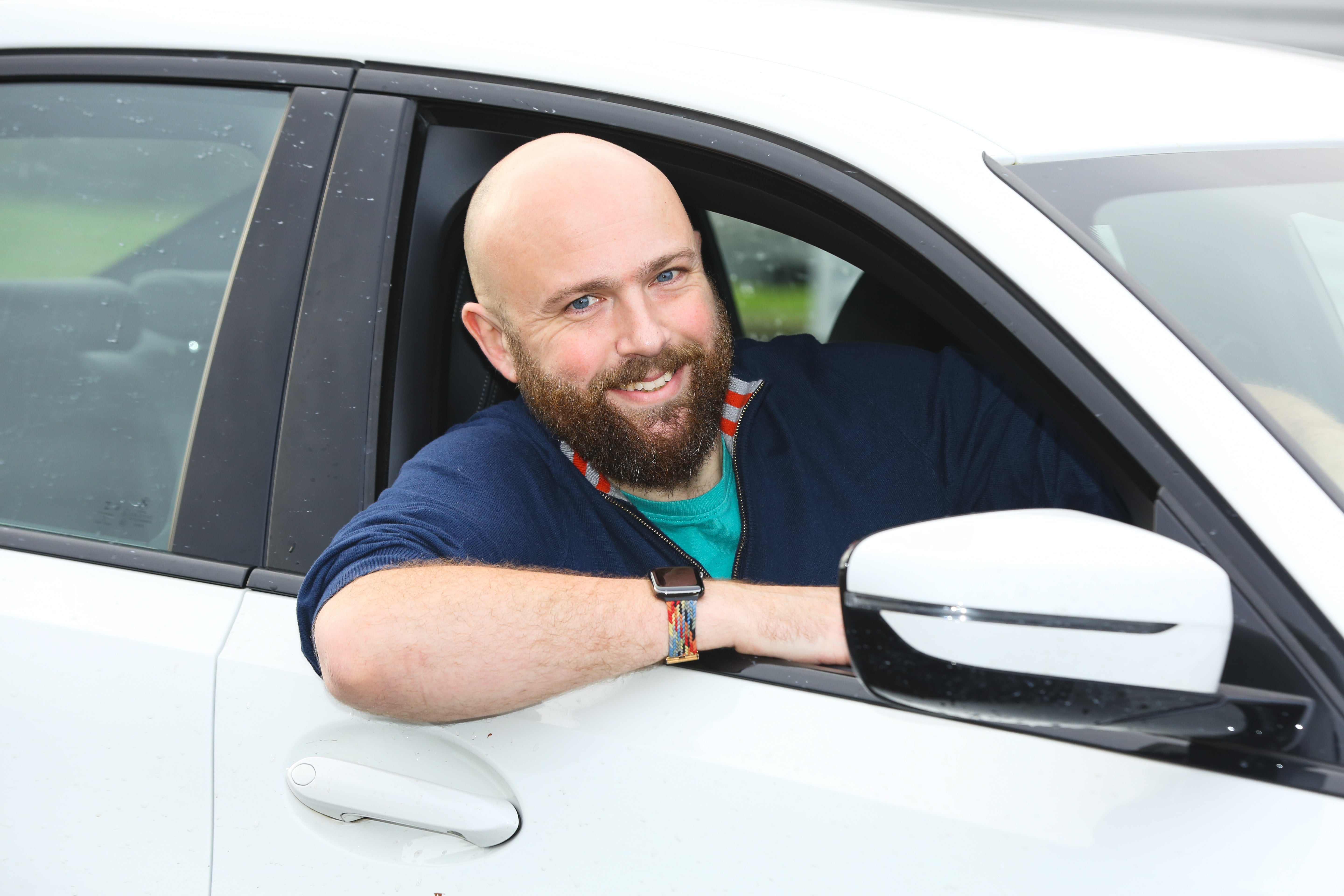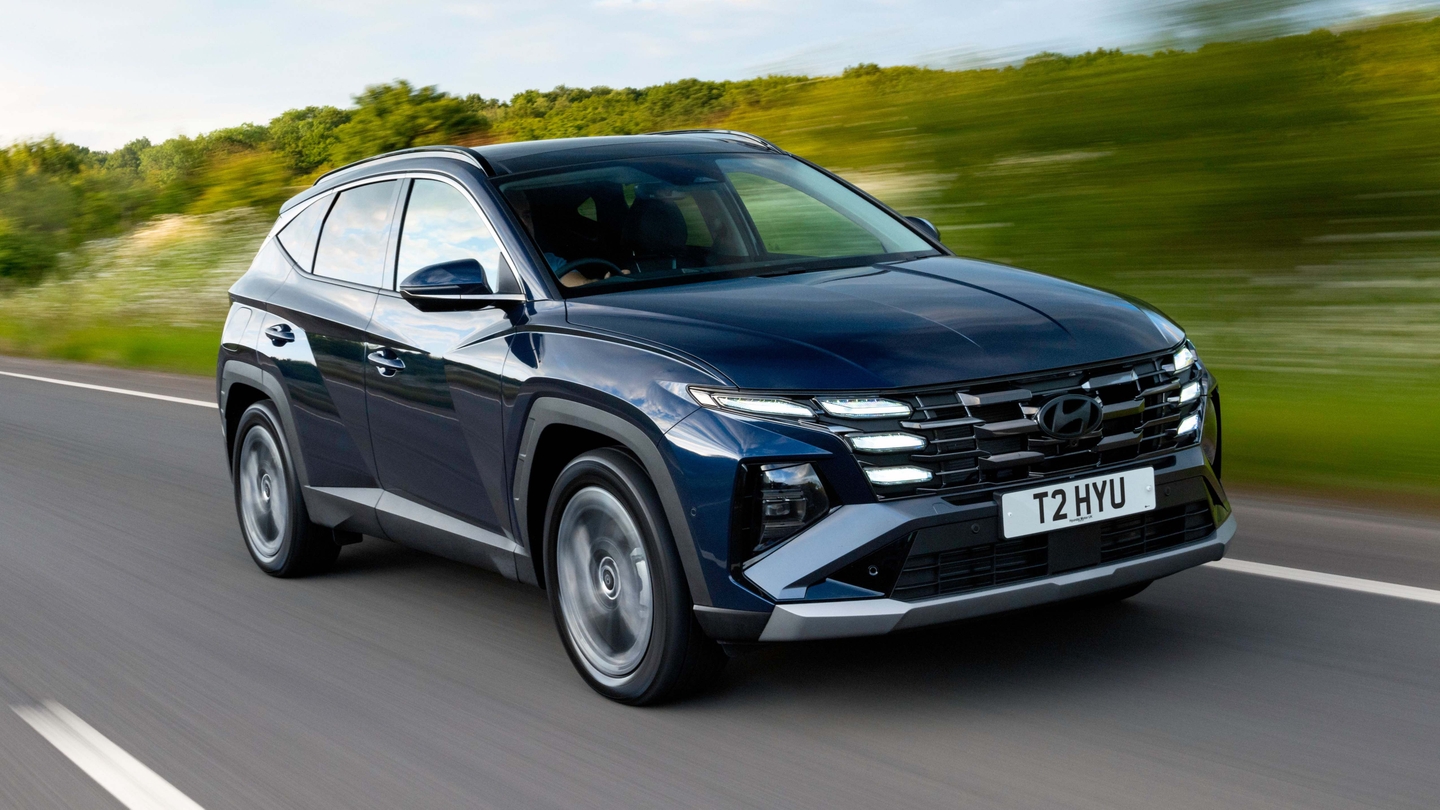
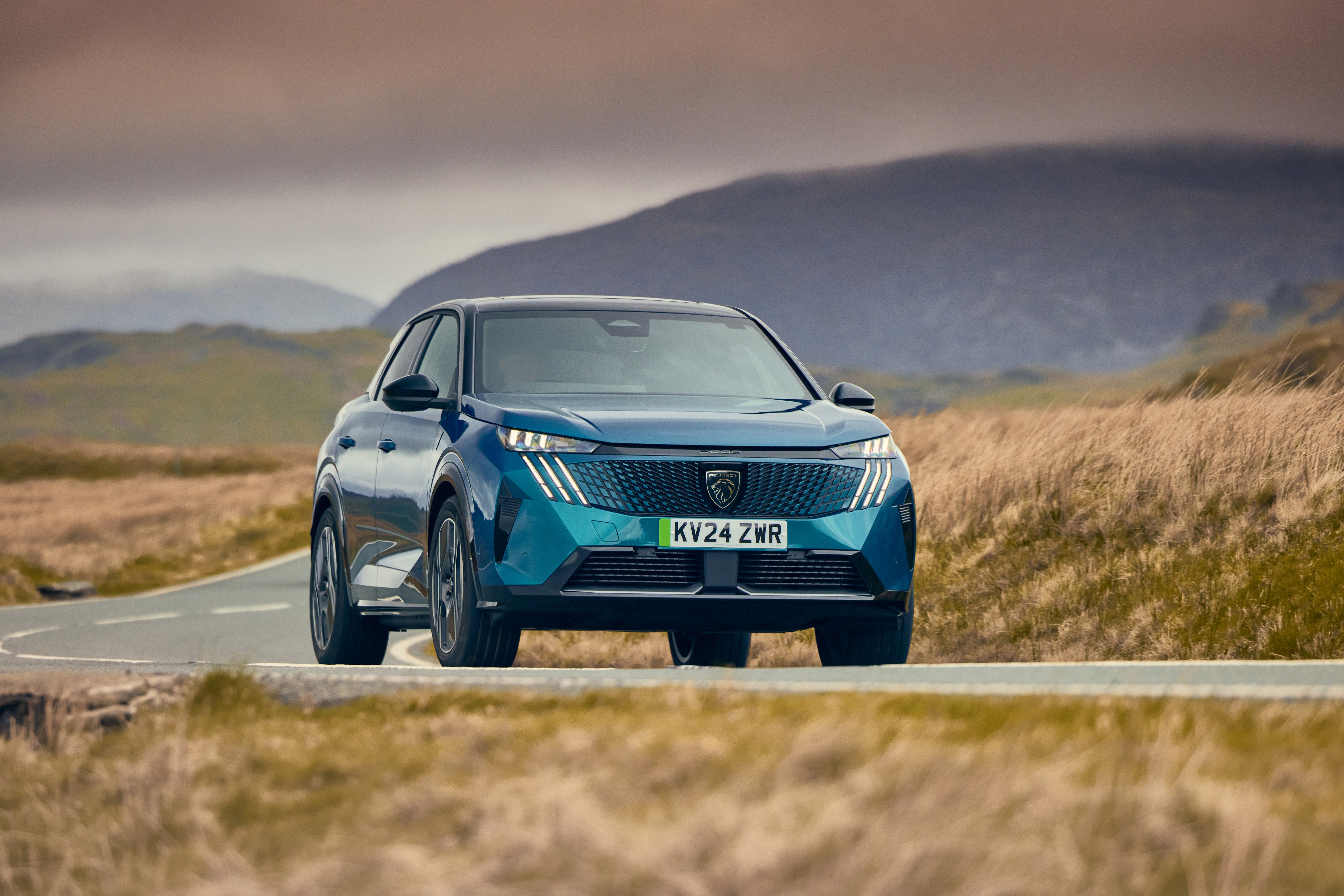
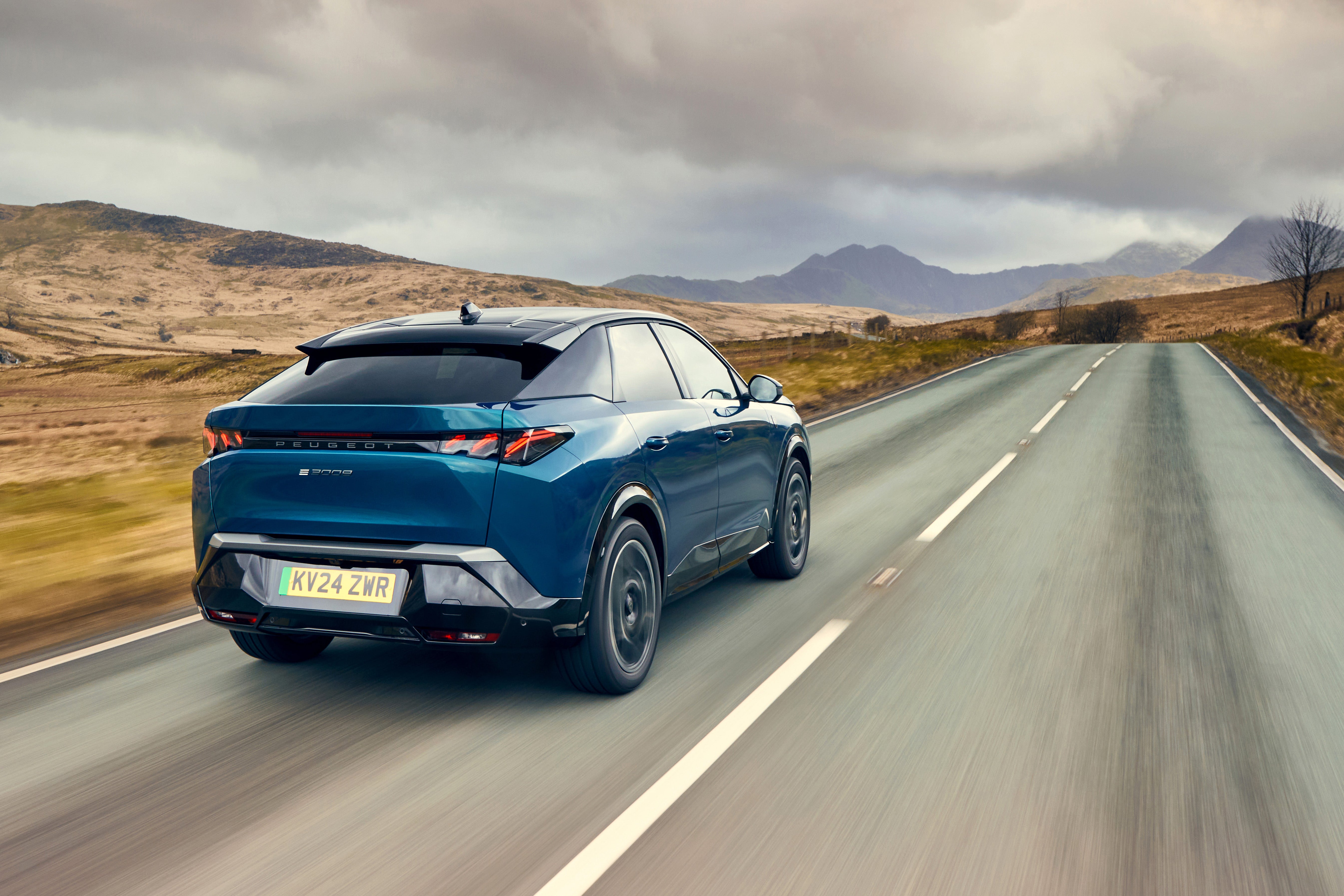
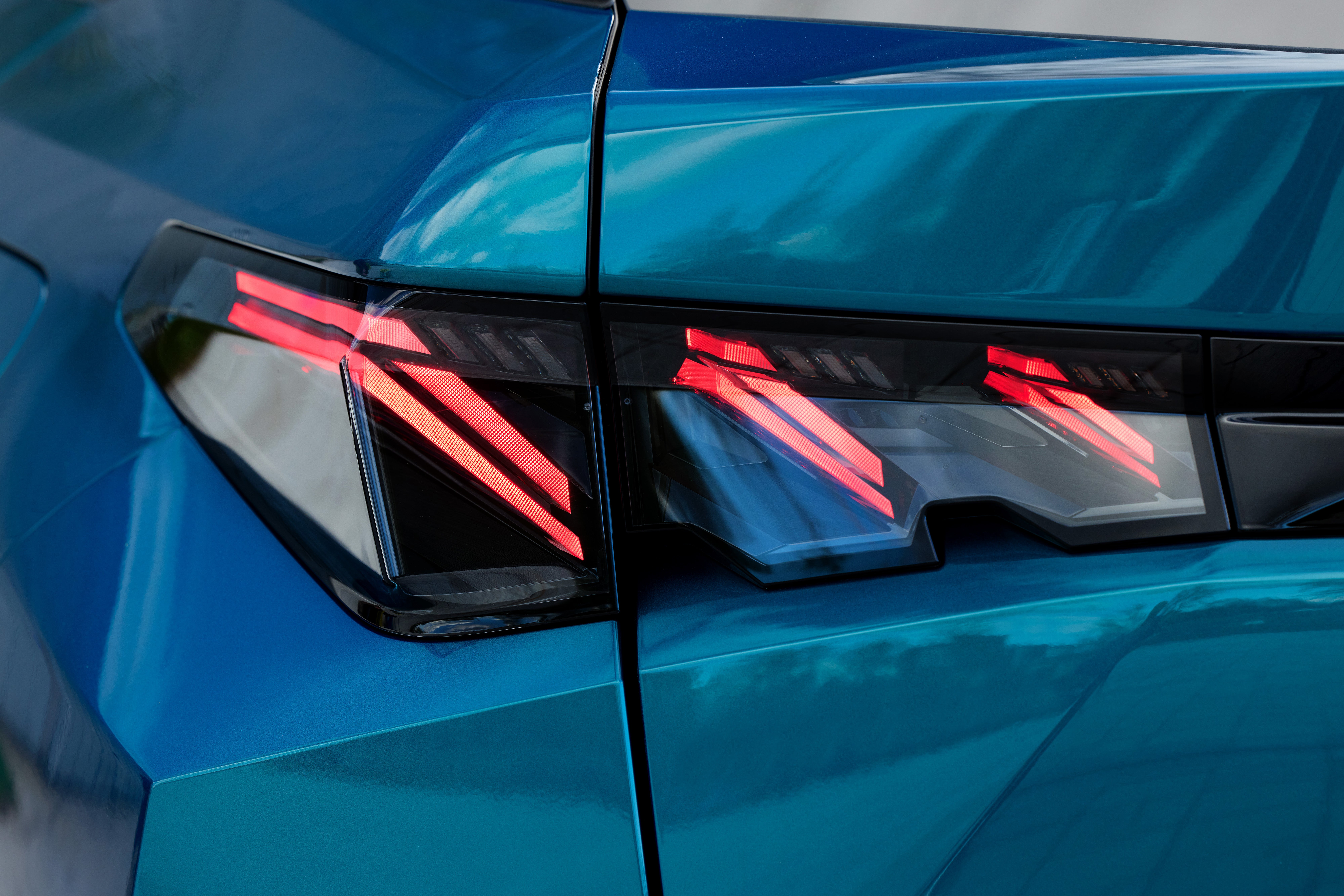
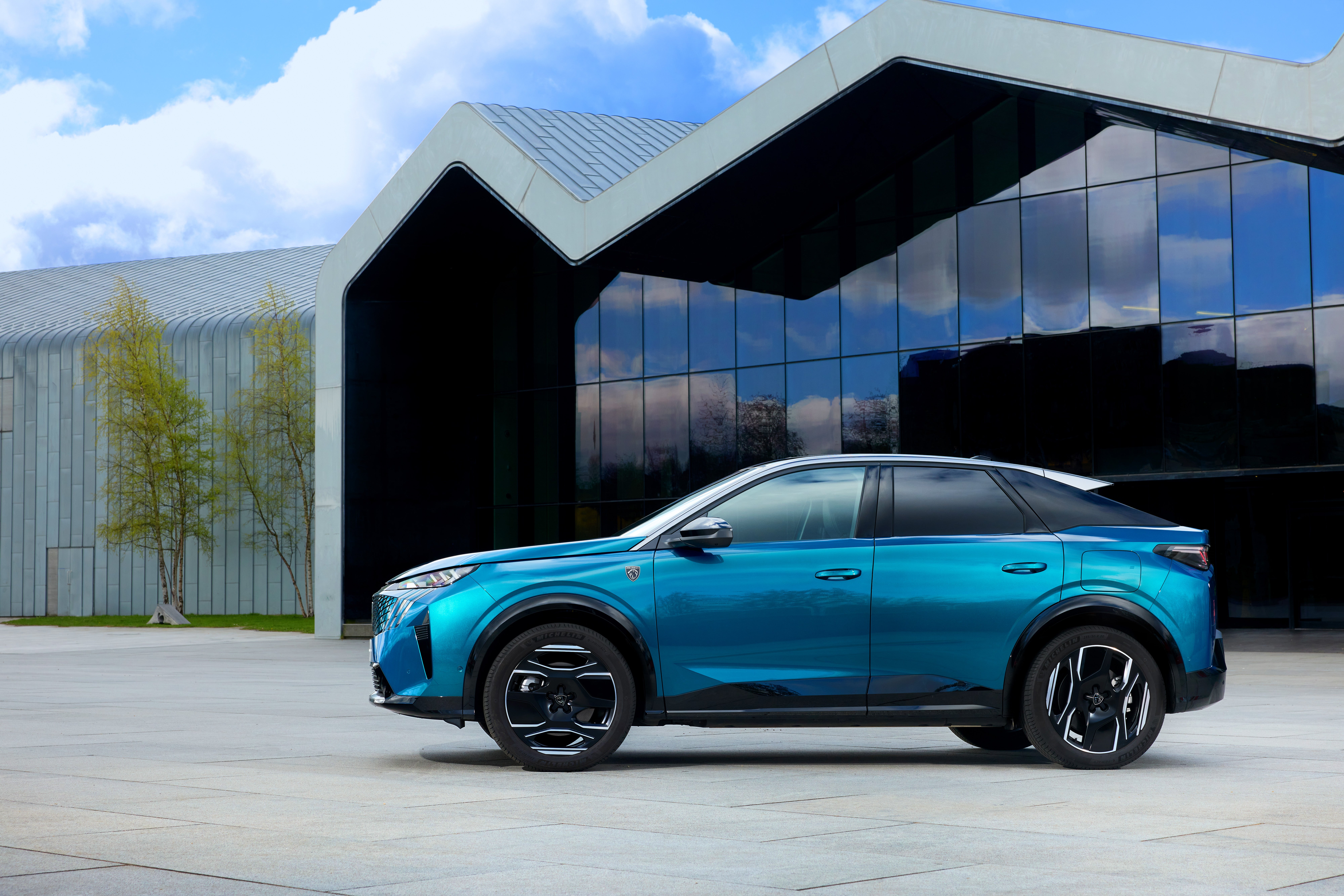
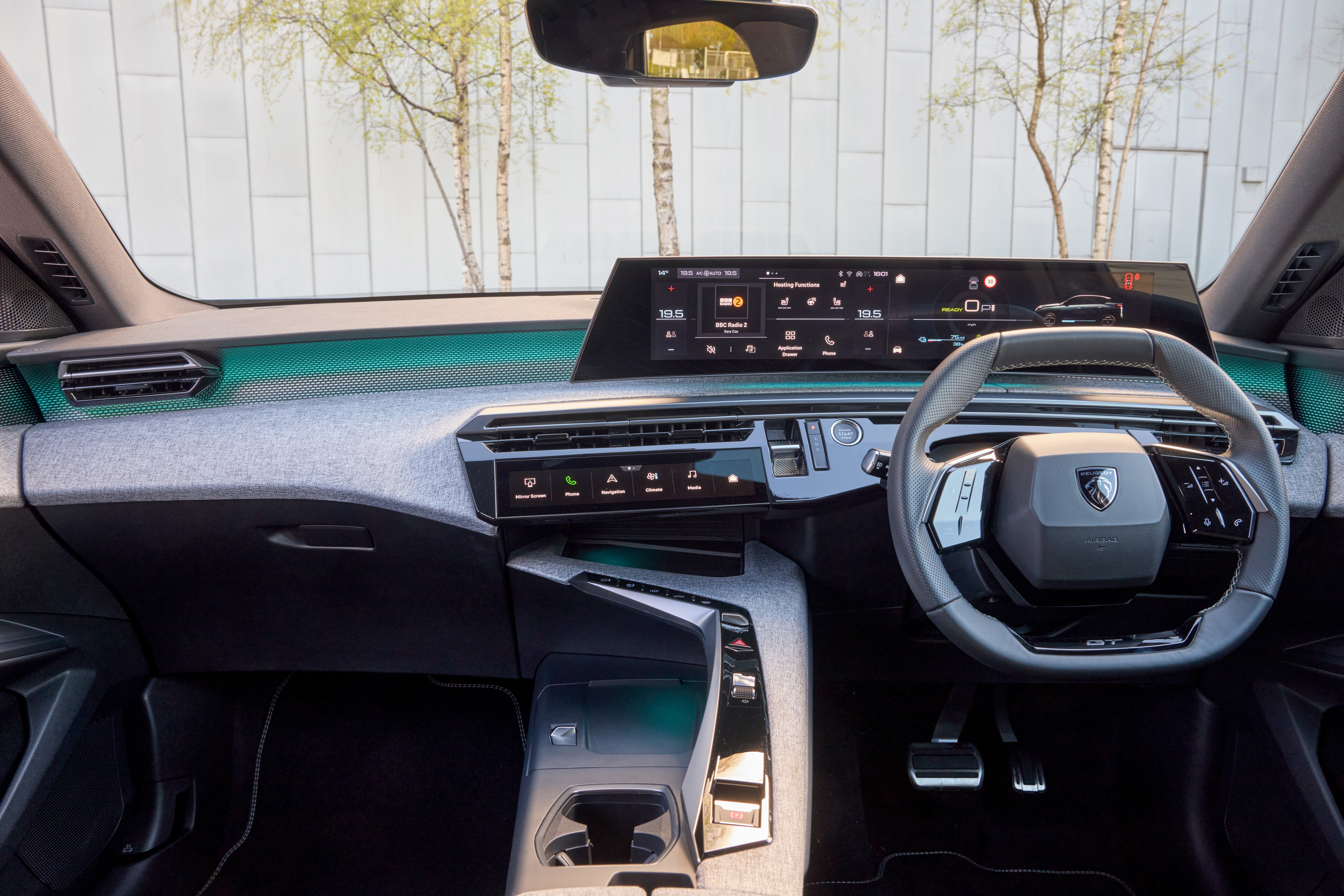
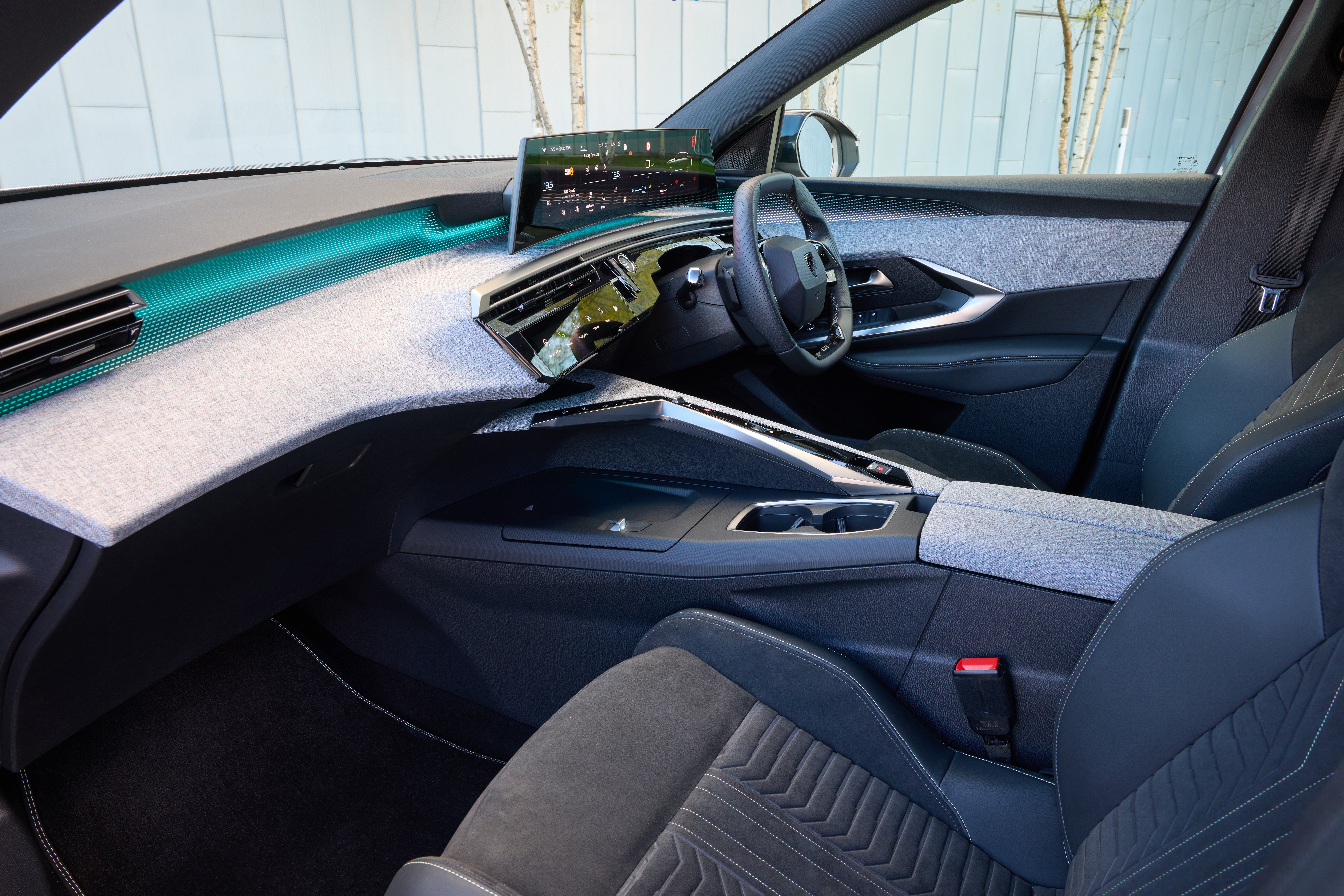
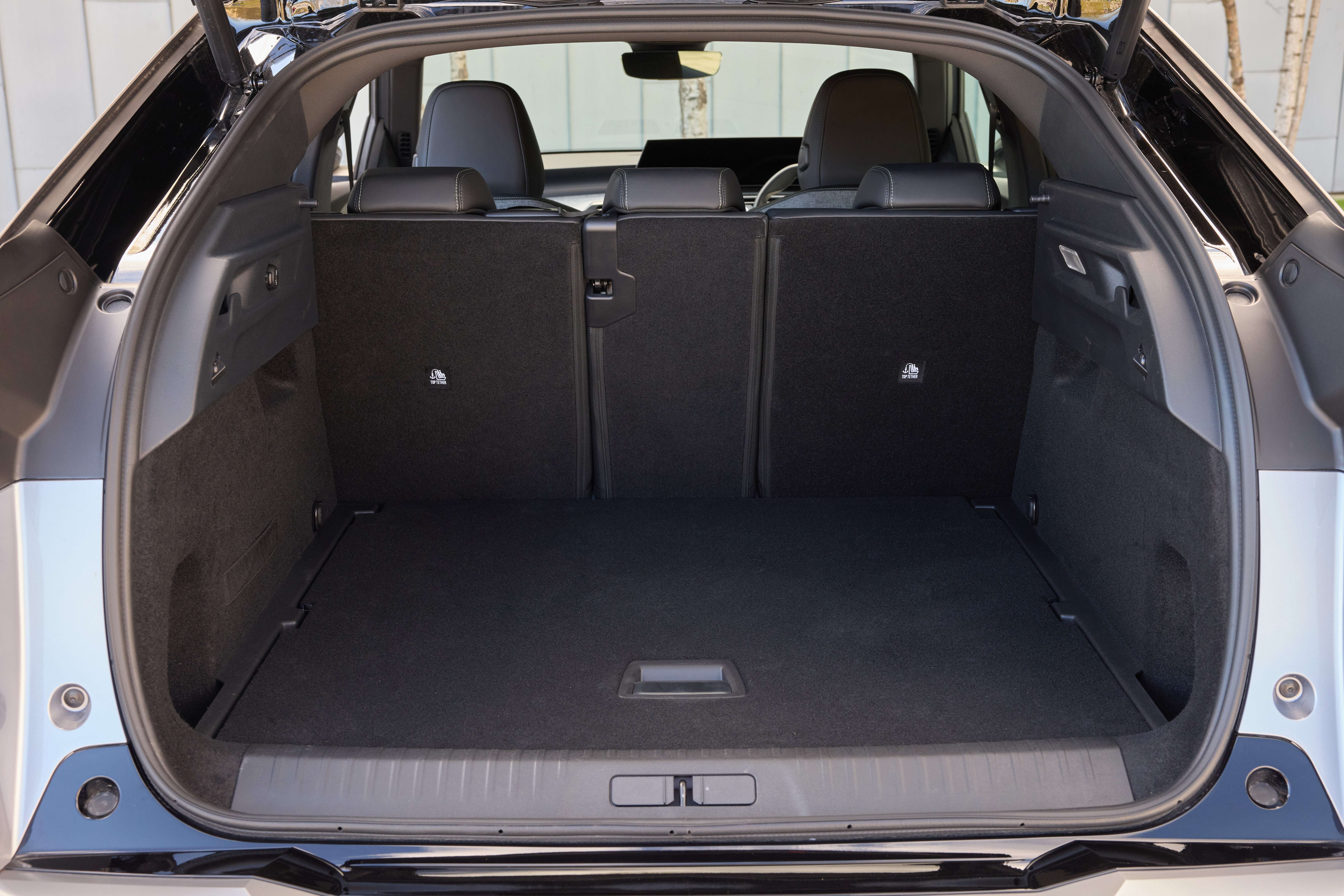
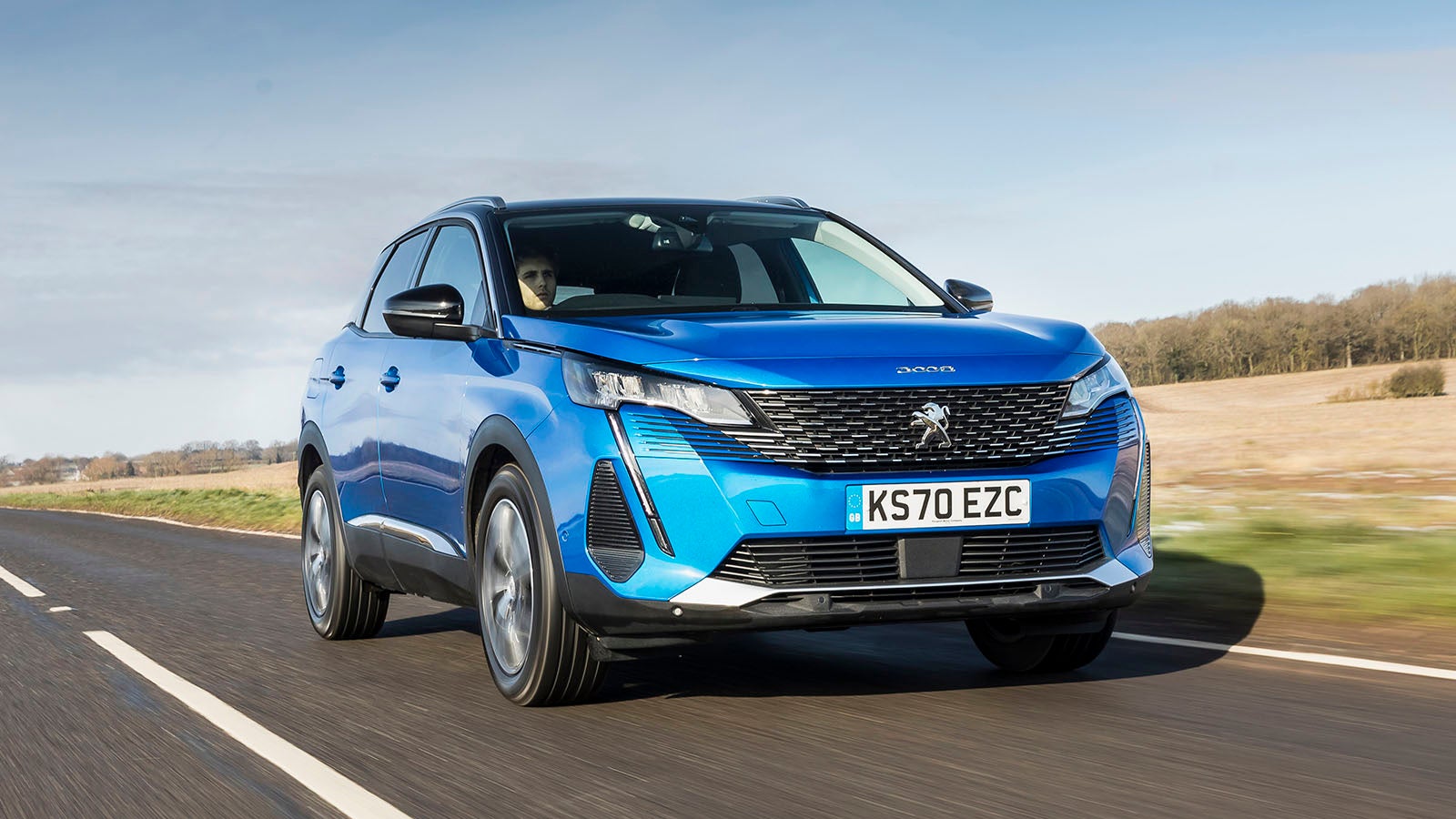
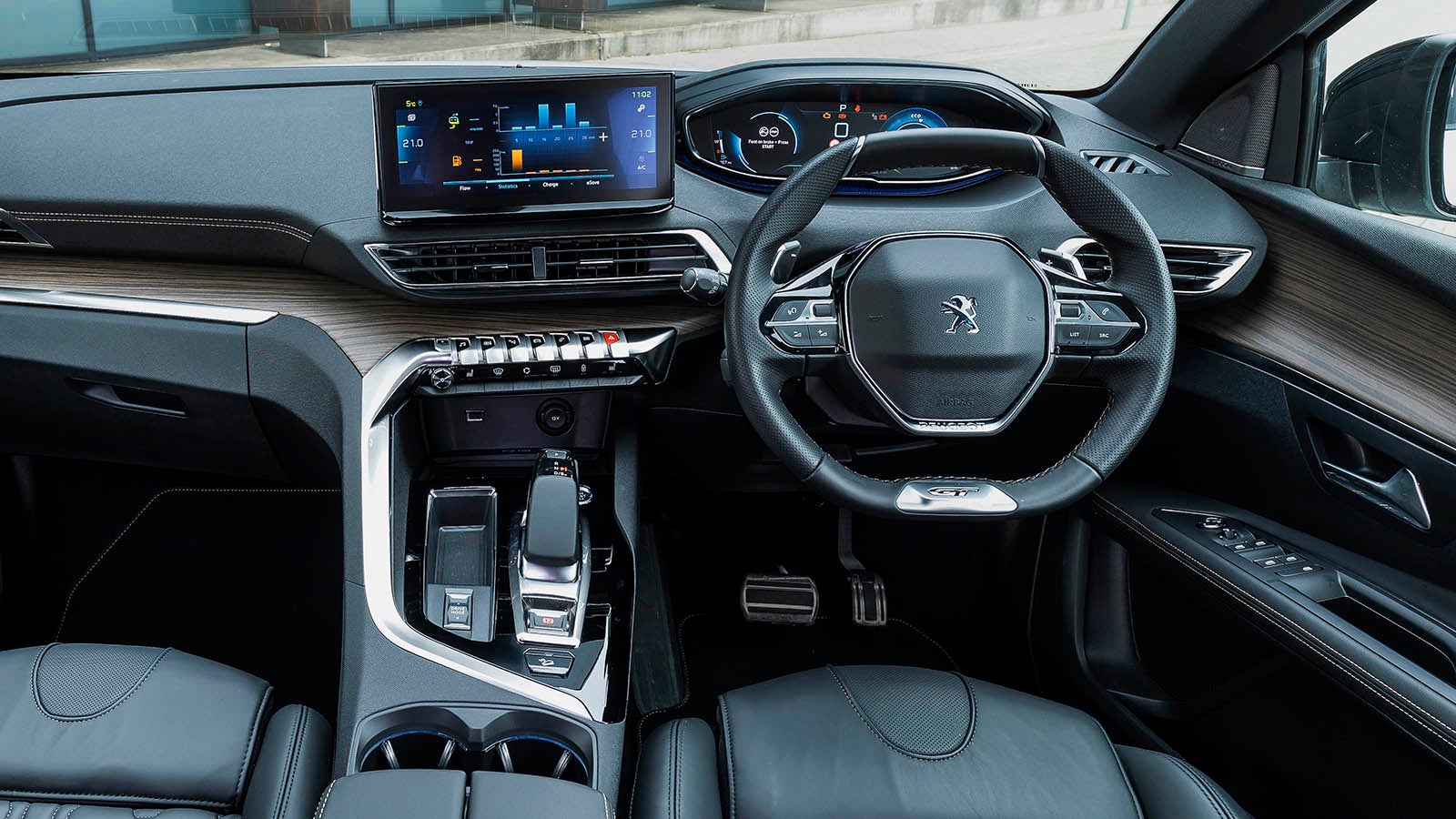
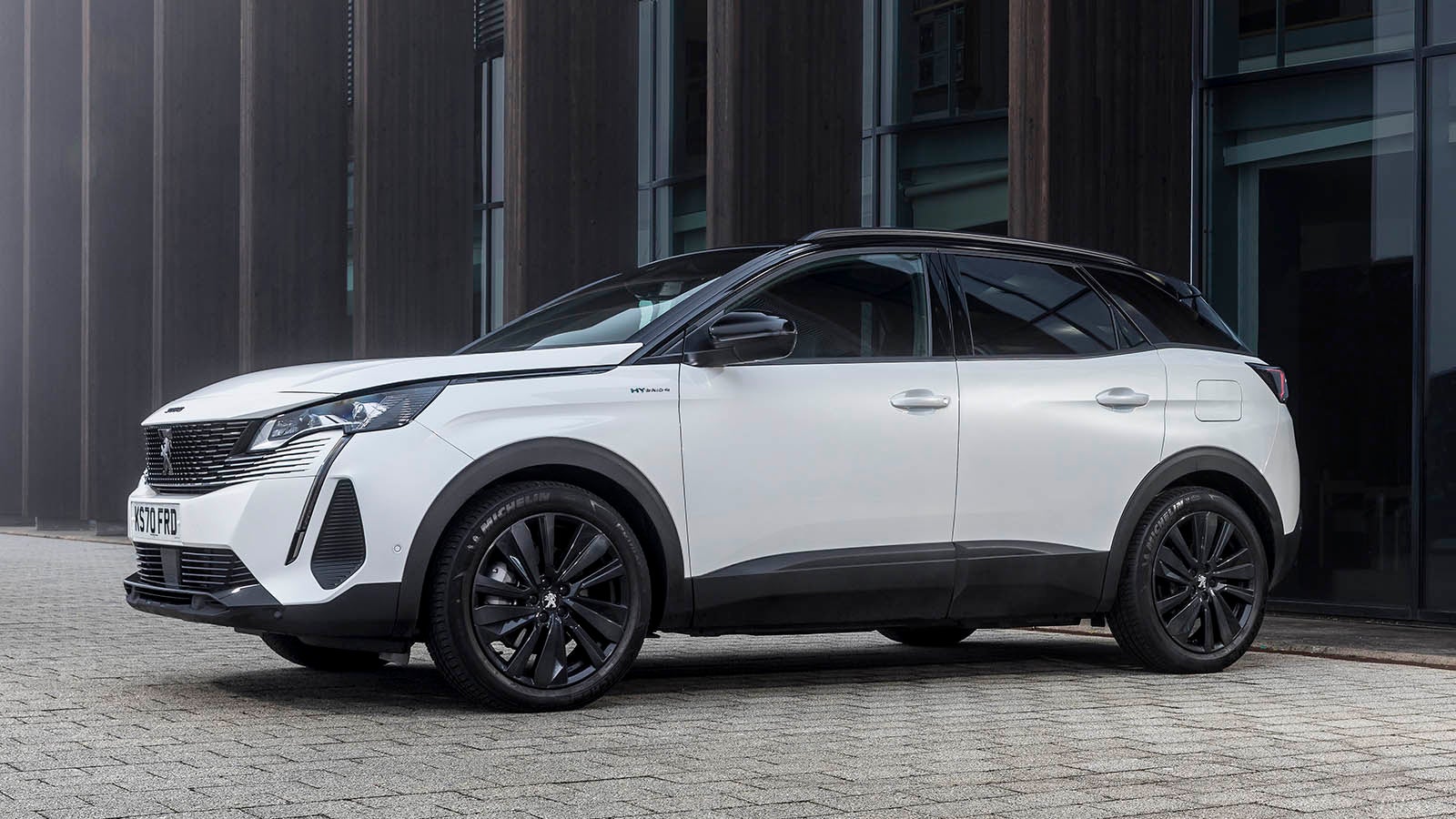
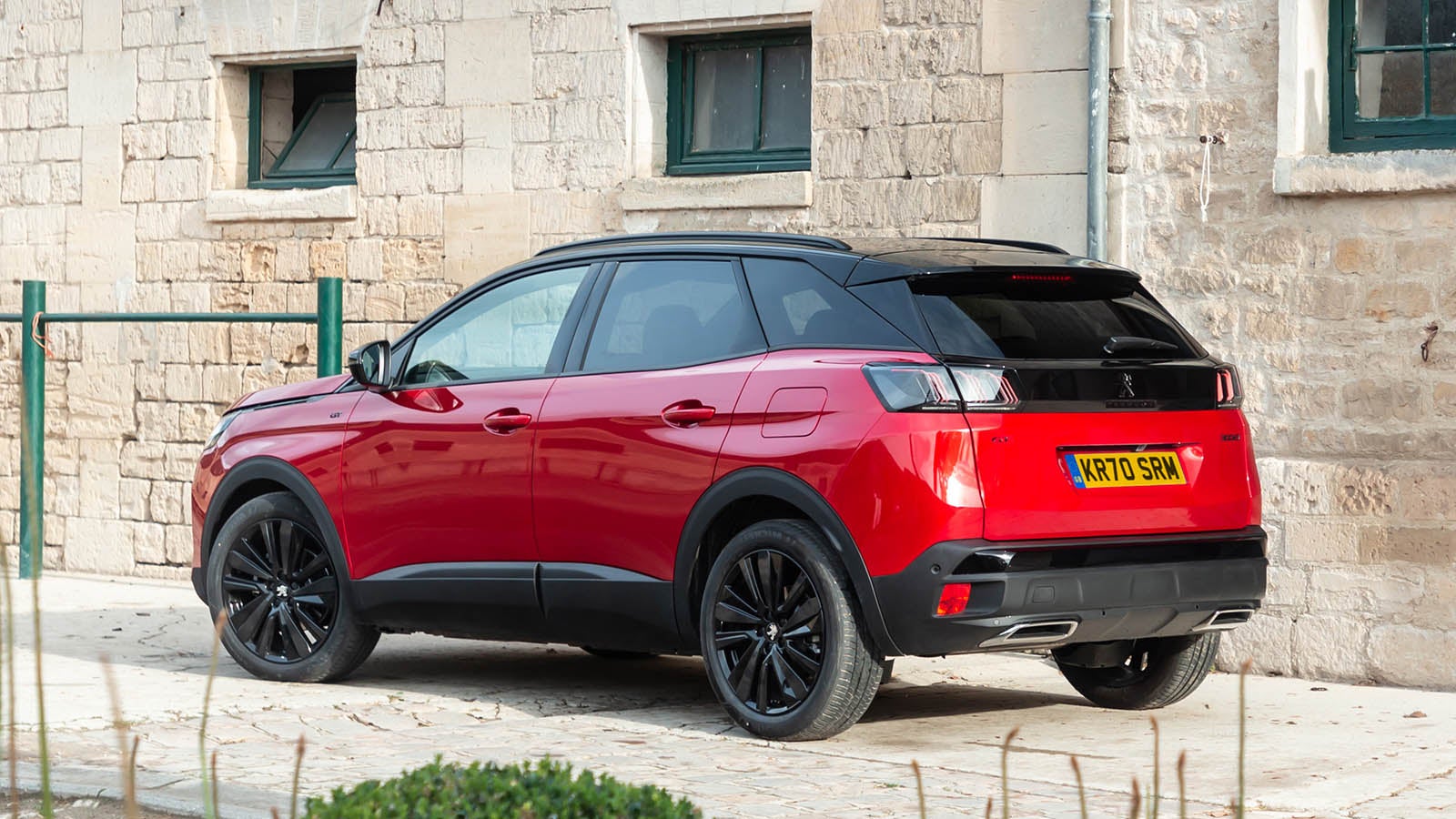
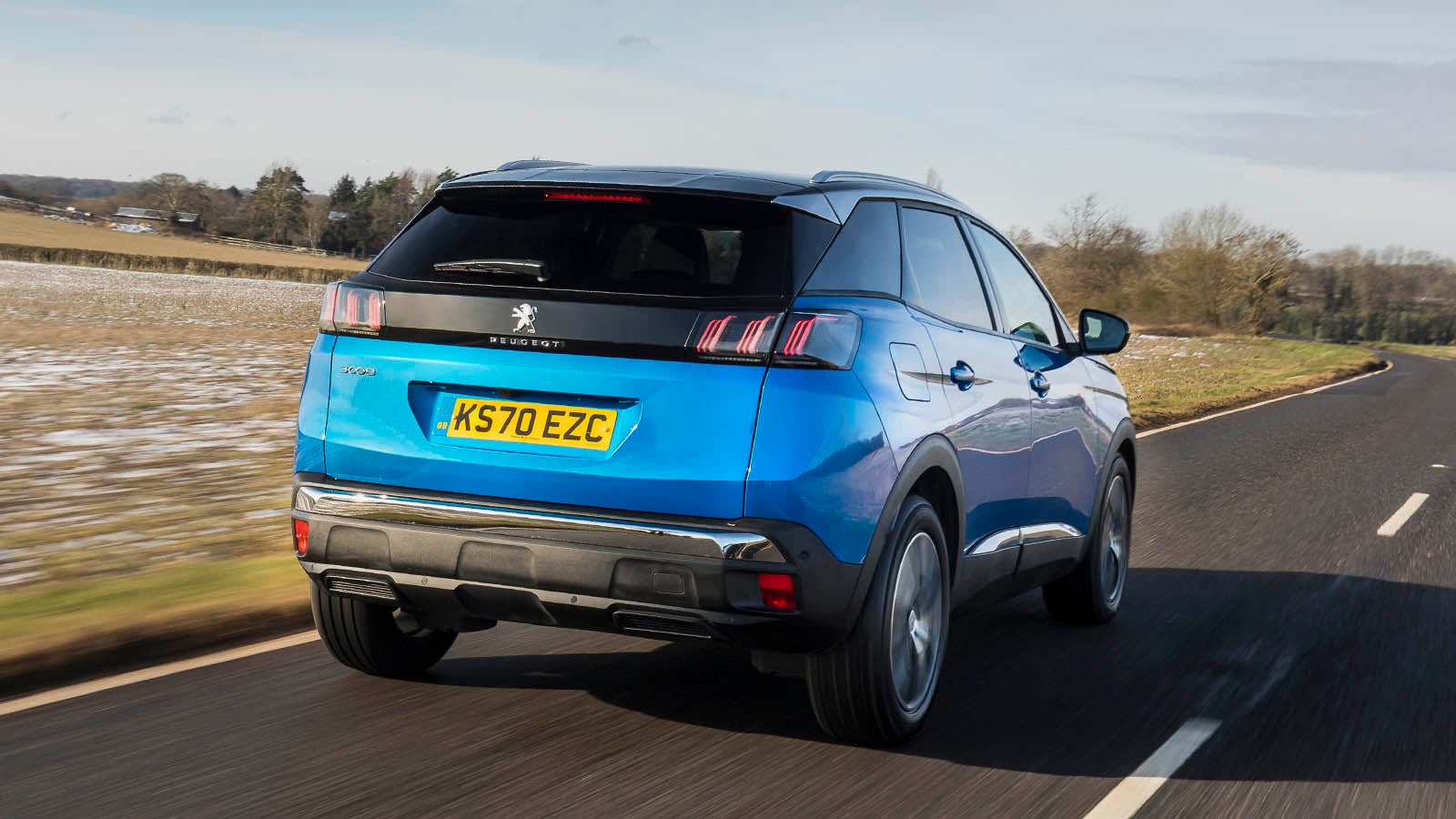
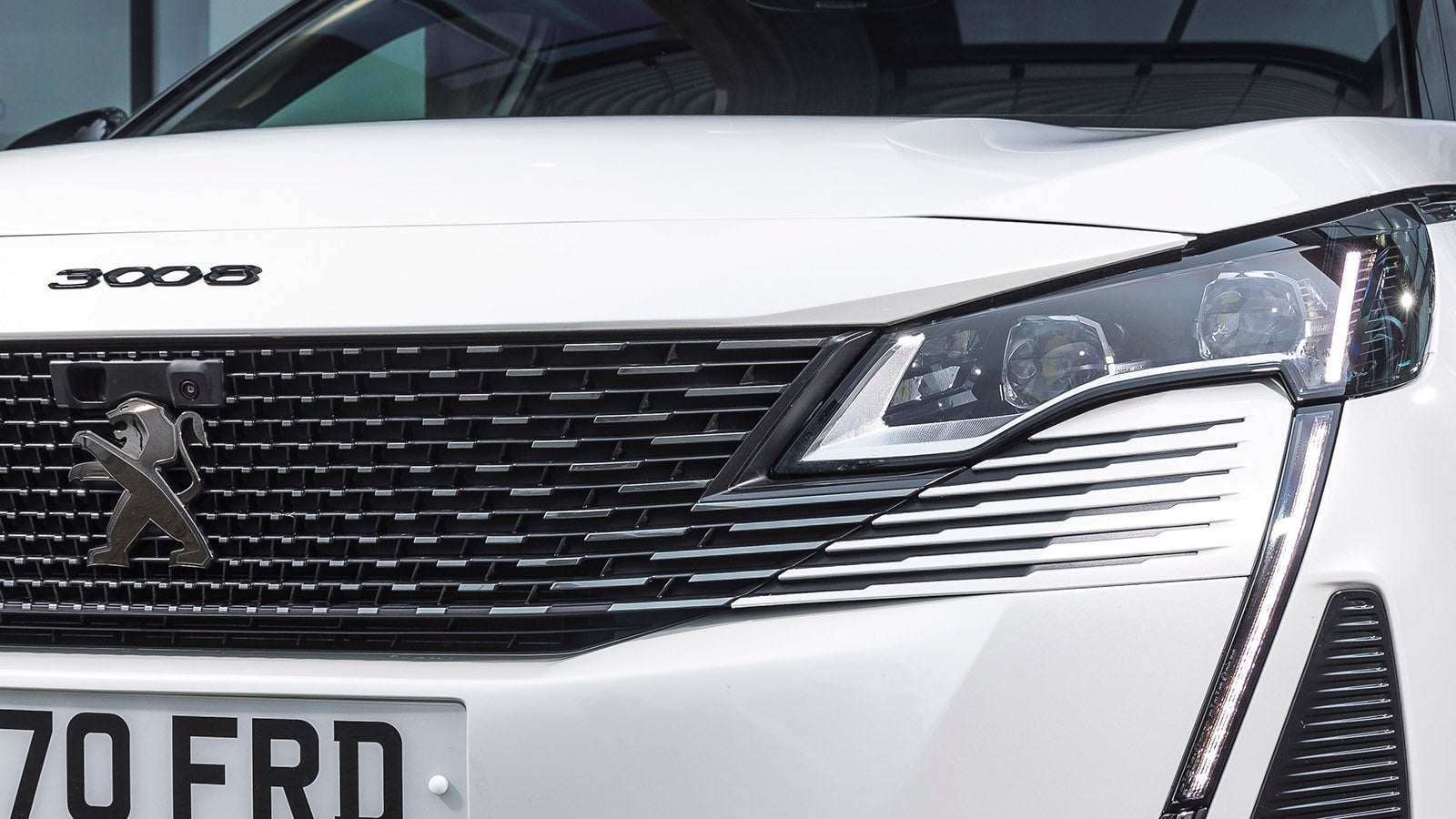
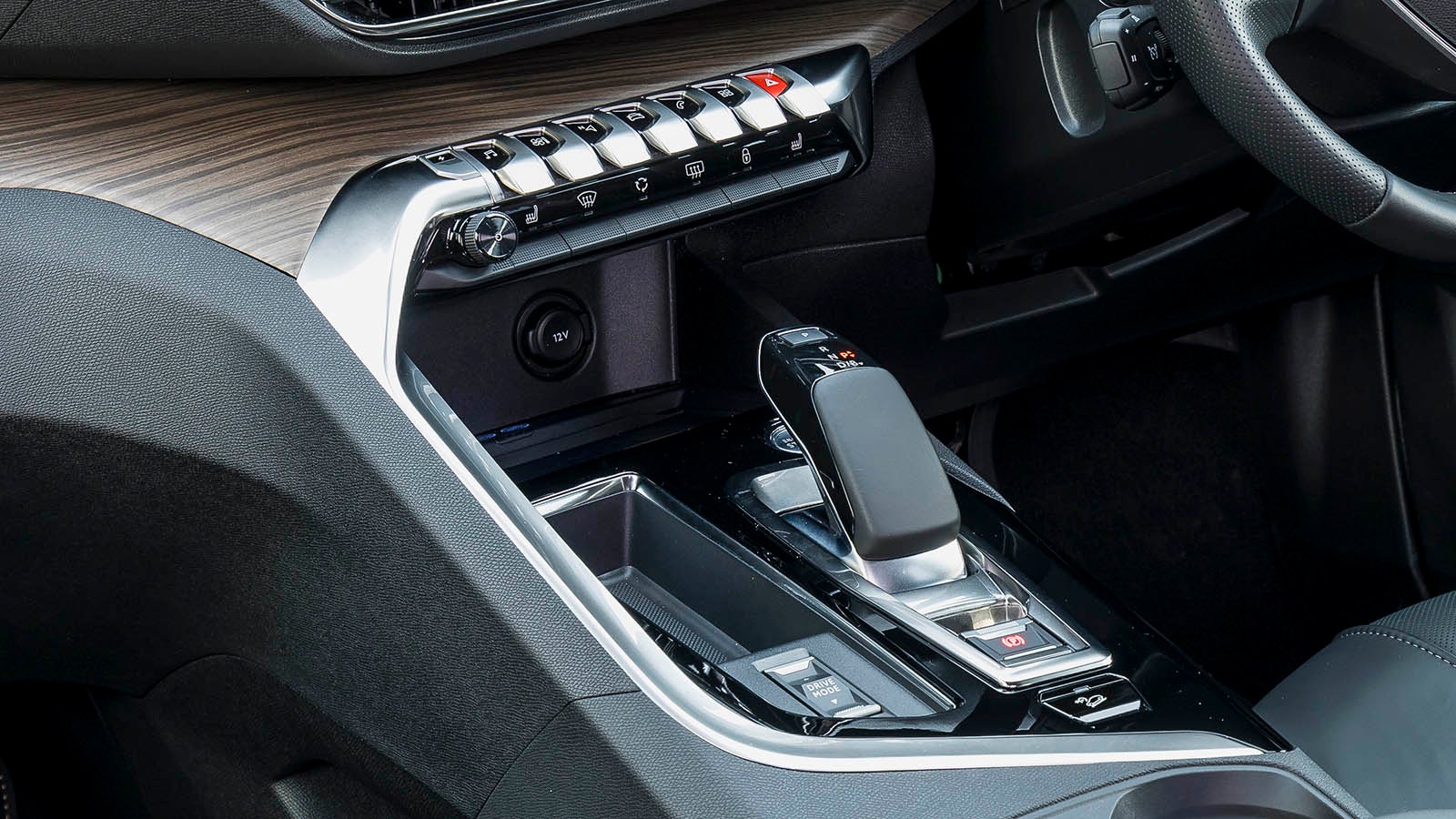
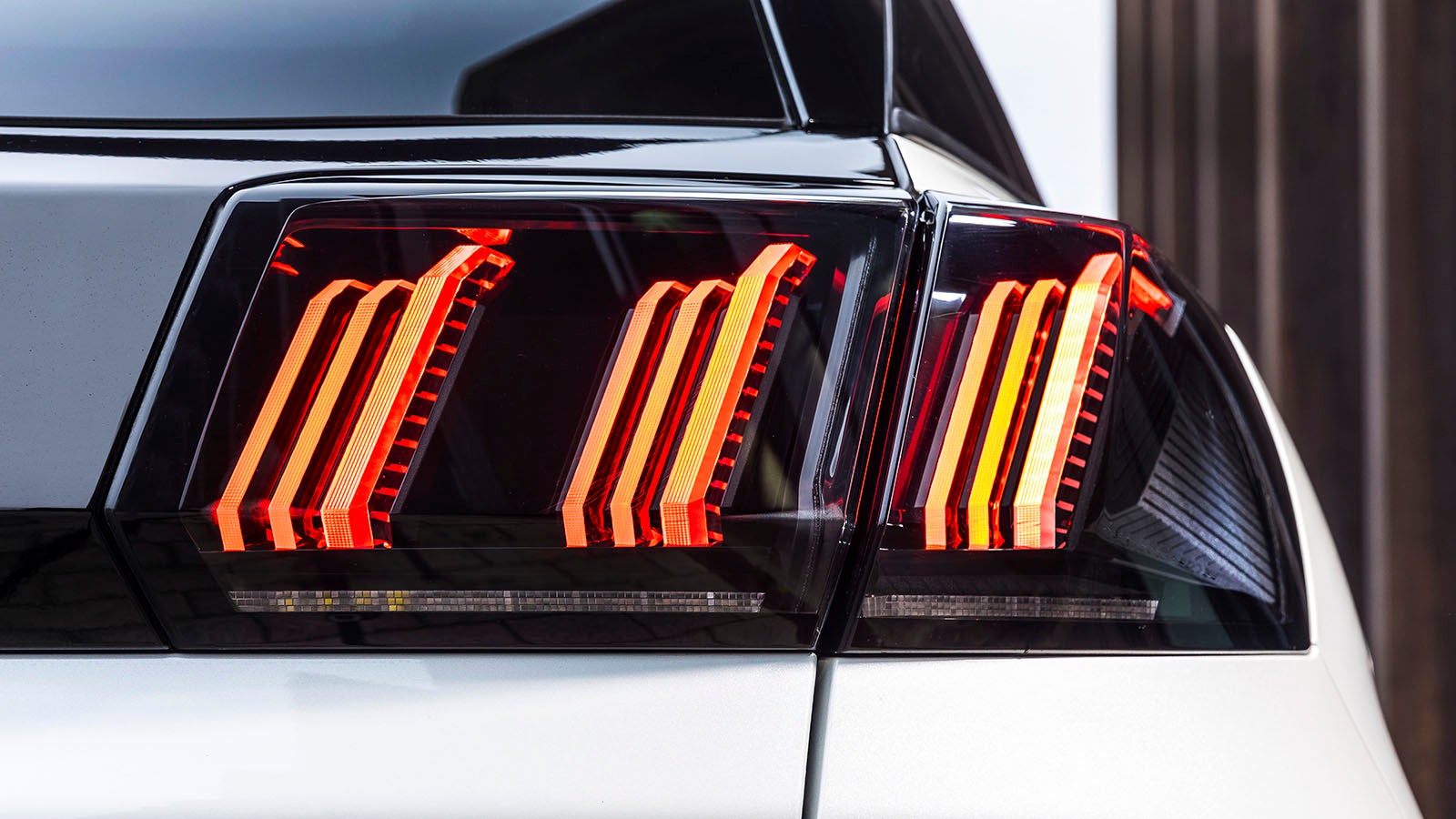
Peugeot 3008 Review
The new Peugeot 3008 is a fantastic family SUV that's available with petrol and fully electric options.
It's also a car that makes you feel good about yourself, with a reasonably luxurious interior and dazzling infotainment tech that looks sharp and works well. And the top-spec e-3008, while expensive, manages well over 400 miles to a charge.
- Eye-catching looks
- Interior feels fresh and interesting
- Big enough for family life
- Boot smaller than some rivals
- Infotainment a bit fiddly
- No big petrol or diesel engines
Should I buy a Peugeot 3008?
If you're after a stylish new family SUV and want something a little more interesting than the Volkswagens and Skodas of this world, one of the best choices is the new Peugeot 3008. Especially because now the 3008 offers two hybrid versions and a fully electric e-3008 that just so happens to be one of the longest-range electric cars on the market.
The most obvious change to the 3008 is that the roofline now swoops down at the rear in a coupe-like fashion to enhance aerodynamics. You get LED headlights up front on all models, though you want a top-spec GT model to get the fanciest pixel LED headlights which continue the trio of 'claws' from the daytime running lights. Entry-level Allure models come on 19-inch wheels, while GTs come on 20-inchers and get a Ferrari-esque shield badge on the wings.
"All versions feel classy inside; the 3008 has serious wow factor"
Things are a little more traditional around the back with the three-claw light signature in the tail lights, though you only get one orange flashing indicator light on each side in Allure models, while in GT models you get three orange – you guessed it – claws.
The electric version promises 326 miles of range from its entry-level 73kWh battery, or 435 miles from the larger 98kWh version. Impressive figures for sure, but a top-spec GT version with the smaller battery will run you close to £50,000 – unless you buy a year-old model from Motorpoint for half its original cost...

The interior feels good for £50,000 and utterly opulent for £25k. Inside, the 3008 wows with a curving dashboard, cleverly cut-out centre console and lots of soft-touch cloth across the dashboard and doors, giving you a sense that you're in a cabin that's designed to delight, unlike the grey innards of its rivals. Half of the Peugeot's giant 21-inch panoramic screen serves as a touchscreen-enabled infotainment system, while the right-hand side is a large digital dashboard that can show sat-nav maps and plenty more. And yes, it's one continuous screen, not two 12-inchers jammed into each other as you'd find in some other cars.
Room in the back of the 3008 is decent, while the 520-litre boot is plenty big enough for family holidays, but the sloping roofline means you can't pack quite as much in as you might in the previous, boxier 3008. There’s always the bigger, seven-seat Peugeot 5008 if you need more space.
The e-3008 does leave a little bit to be desired once you're out on the open road. The suspension jiggles you about in your seat, a reminder that the springs are coping with 2.1 tonnes of SUV. Yet there's plenty of body roll in faster corners too, and the tiny steering wheel often leaves you dialling in lock a bit faster than you anticipated, which means your passengers can lean out of their seats a bit. It's best as a gentle cruiser.
The Peugeot has a few mainstream electric rivals that can muster the same driving range on paper, but in our experience fall short in the real world. The Volkswagen ID.4 undercuts the Peugeot slightly on price, but doesn't have the charm, efficiency or interior quality of the French car, while the Tesla Model Y is faster and has easy access to Tesla's charging network, but is a bit pricier than the Peugeot if you want the same range.
If you’re considering the hybrid or plug-in hybrid 3008, you’ll be comparing it against the likes of the Ford Kuga, Volkswagen Tiguan, Hyundai Tucson and Kia Sportage. And because it's lighter than the electric one, a petrol 3008 is slightly more fleet-footed.
Interior and technology
The 3008 is the first of a new generation of Peugeot models, bringing with it a sizeable evolution in terms of layout, technology and materials… which is a wordy way of saying it has serious wow factor. Certainly more so than the Tiguan or Kuga.
Sure, the 3008 continues the brand's i-Cockpit tradition, with a small steering wheel that you look over to see your digital dials, but it's a new steering wheel with redesigned buttons. They move when you press them, but do look a little bit plasticky. The gearshift paddles are new too, and thankfully the entire paddle moves when you give them a tug, unlike on previous Peugeots. In the e-3008 they adjust the regenerative braking effort of the electric motor. Indicator-stalk enthusiasts will note that these are new too. How exciting.
Star of the show is the ginormous 21-inch screen running across the top of the dashboard – actually, it appears like it’s floating above the dash. It's bright and easy to use, thanks to another screen underneath it that features customisable shortcut buttons. You can swipe on this screen to access a further five shortcuts, which you can set to things such as Apple CarPlay, climate controls, audio settings and so on. It's a doddle to get used to, and the standard-fit wireless CarPlay and Android Auto are the icing on the cake.

The only annoyance is that you have to tap at the top of the screen to access the climate menu before you can alter the temperature – the only physical buttons are for the front and rear window demisters, air recirculation and to turn the AC off and on. But the 3008 isn't alone in this.
Standard equipment levels are strong. Entry-level Allure models get the big screen and custom shortcut screen, along with a wireless phone charger, a dash of ambient lighting under the central screens, comfy cloth seats and a reversing camera and rear parking sensors. Top-spec GT models add adaptive cruise control, front parking sensors, more extensive ambient lighting, some lovely heated suede front seats and fancier pixel LED headlights with adaptive high beams.
All versions feel classy inside, thanks to extensive use of light-coloured cloth that helps add a lounge-like sense of plushness to the cabin. We tested the optional Nappa leather comfort seats, and they are exceptionally comfy and well worth plucking from the options list. They have a huge amount of adjustment, including a tilting seat base and under-thigh support – features that helped them win the seal of approval of AGR, a German conglomerate of backache specialists.
Practicality
Back-seat space in the 3008 is pretty good, if not class-leading. There's enough kneeroom for a 6'3" adult to sit behind their own driving position, while headroom is not an issue unless you lean all the way back in the seat, at which point your head will touch cloth on that aerodynamic swooping roof. Most people will be able to fit their feet under the front seats.
The new 3008 isn’t as spacious in the back as the old car, with the sloping roof and the shape of the doors making it difficult to get in and out. And, as the doors don’t open particularly wide, it’s not the easiest to put a child seat in – especially with the zipped Isofix points.

Middle-seat accommodation is okay and – being built on a new EV-friendly platform – there's no annoying hump in the floor between your middle passenger's feet. There's a central armrest in the middle, but it only gains cupholders and a smartphone holder on top-spec GT models. Heated outer-rear seats are on the options list, while all models get two USB-Cs and a 12-volt socket for charging devices.
Boot space comes in at 520 litres, which is average for this class of car, and there's a good amount of storage space under the boot floor – although this disappears in dual-motor versions. There's no frunk like on a Tesla Model Y.
Engines and performance
The e-3008 comes with a couple of battery and motor options, and there are plug-in hybrid and self-charging hybrid versions of the 3008 as well. We tested the basic 210hp, front-wheel-drive electric version with the 73kWh battery – but there's also a 320hp dual-motor version (with a 0-62mph time of 6.4 seconds) and a 230hp long-range version with that magic 435-mile claimed range.
The basic single-motor e-3008 is not a neck-snapping car to drive, with a genteel 0-62mph time of 8.8 seconds, and it feels very much tuned for real-world daily driving and maximising efficiency. We saw over four miles per kWh in our time with the car – a very impressive figure that would yield over 300 miles, which is very close to the official estimate.

If you don't fancy an electric version, you can get the new 3008 with a 1.2-litre petrol engine mated to a 22hp electric motor and a self-charging hybrid system. That all goes through a six-speed dual-clutch gearbox with power going to the front wheels, with Peugeot claiming between 44 and 52mpg, and a 0-62mph time of 10.2 seconds. It's basically a normal petrol engine, with the familiarity of filling up with fuel and no need to plug in.
Between them, the PHEV version of the Peugeot 3008 promises up to 55 miles of electric range, yet still has a 60-litre fuel tank for the 150hp petrol engine, so promises better combined range than most rival PHEVs and their much smaller fuel tanks.
Driving and comfort
The e-3008 doesn't feel that sporty to drive, thanks again to that gentle accelerator response (although sport mode does spice things up slightly). But it's the suspension that lets the side down somewhat. Bumpy and jiggly around town, it never really settles down at higher speeds either. At least tyre and wind noise are fairly minimal at a cruise.
Despite having seemingly firm suspension, it's not very supportive of the e-3008's mass in fast corners, allowing a decent amount of body lean – usually something we'd accept in a softly sprung French car that irons out bumps, but the e-3008 doesn't excel at that. We think you can blame the fact the e-3008 tips the scales at a slightly portly 2.1 tonnes. For comparison, a Tesla Model Y weighs about 200kg less.
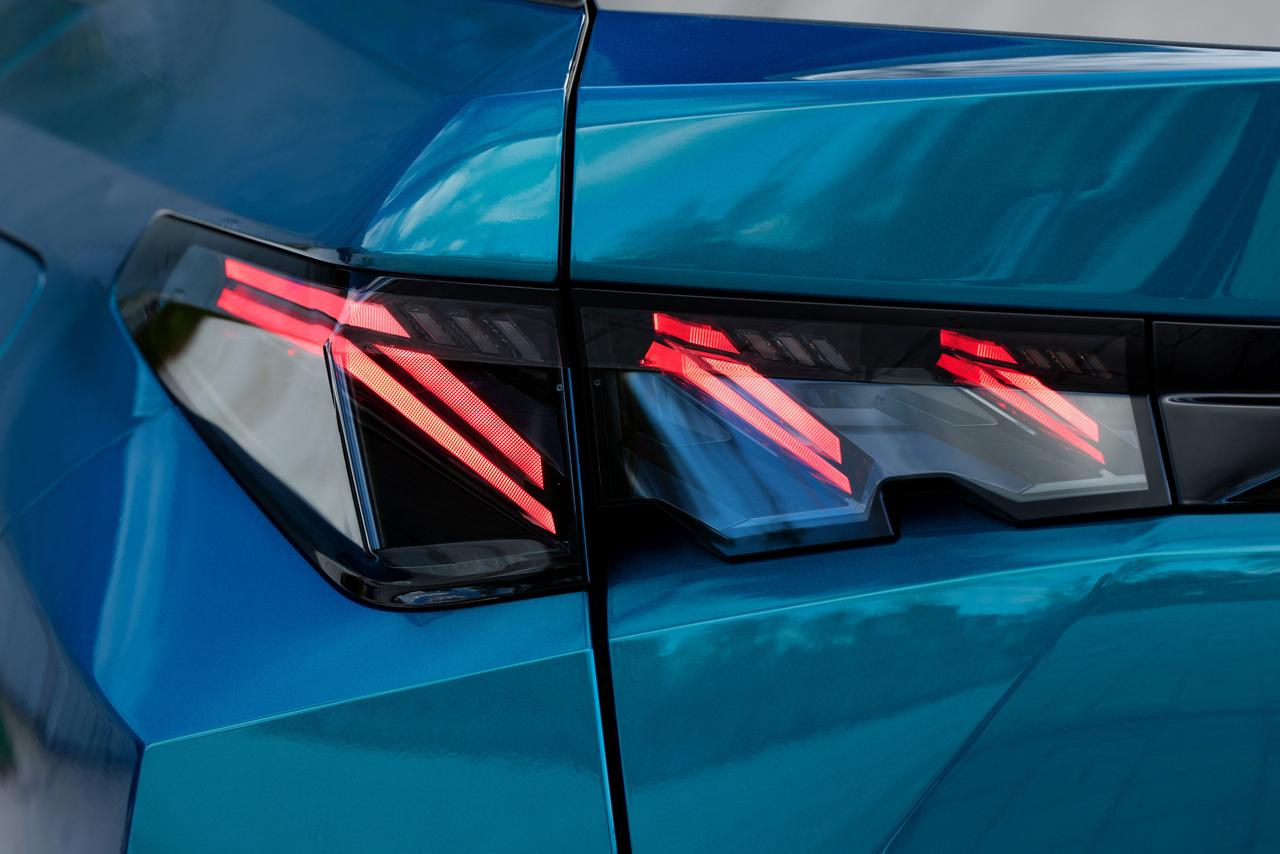
The regular 3008 is also considerably lighter than the e-3008, so it rides much more softly and doesn’t roll quite as much through the corners. It’s still not a driver’s car whatsoever, though.
Slow down a bit and the 3008 is a predictable and grippy car on a country road, though the quick-ratio steering and the small steering wheel do conspire to make you turn in to corners a bit harder than you might expect, leading to some awkward leaning in your seat. Around town, the same fast steering makes parallel parking a doddle, but the restricted view out the back corners of the car caused by that swooping roofline makes the reversing camera a necessity rather than a gimmick.































